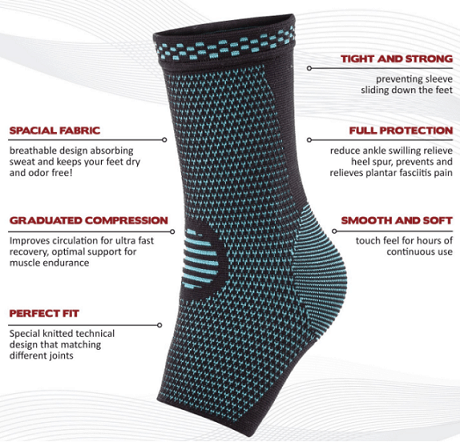Best Remedies to Treat Rosacea Naturally
Rosacea – A chronic skin disorder that mostly affects the face, especially the cheeks, nose, chin, and forehead. Anyone can be affected by this rosacea but teenagers and middle-aged women with fair skin are more prone to this problem.
One who suffers from this problem will experience red patches, swollen eyelids, bumps, swelling, burning sensation, small cysts, thick & dry skin, etc. as their symptoms. However, the symptoms will come and go but the skin will erupt again after few weeks.
The exact cause for rosacea is still unknown and as per modern medicine, there is no real cure for this rosacea and when a person gets affected with this condition then they have to experience flare-ups on and off till the rest of their life.
Most people struggle a lot in controlling the rosacea symptoms from reappearing like changing their lifestyle or taking certain medications or applying several lotions or creams but don’t get succeed. No worries, as there are many holistic steps that help to prevent rosacea from causing breakouts, painful redness, skin irritations, etc. by simply reducing the exposure to triggers that raise inflammation and makes it worse.
Some researchers believe that swelling of the blood vessels under the skin, overexposure to direct sunlight, excessive drinking, consuming too much spicy food, stress, aging, genetics, intense exercise, sinusitis or people living in extreme temperature, etc. will cause this rosacea.
Instead of using commercial cosmetic products for treating rosacea, you can choose some simple natural home remedies to minimize the symptoms and also include them as a part of your daily activities to get relief from the rosacea.
Home Remedies for Rosacea:
Contents
Rosacea is not a life-threatening problem but can be a warning sign that something goes wrong internally. So, make sure to fix your internal health (especially the immune system) then the external health is automatically fixed with some external skin care.
Here are some best natural remedies that are widely used to treat rosacea and its symptoms. These natural remedies along with healthy diet and some skincare hygiene will definitely help you to get rid of rosacea.
Let’s get started…
Remedy – 1: (Chamomile Compress)
Chamomile contains active compounds like terpenoids and flavonoids that exhibit soothing effect and reduce the redness and irritation. It has rich content of antimicrobial and anti-inflammatory properties that help you in dealing with redness, small bumps, and inflammation on the affected skin area.
- Take 3 – 5 chamomile tea bags and soak it in 3 cups of boiling water for about 10 minutes.
After that, take out the tea bags and refrigerate this tea until it cold.
Now take a clean cotton cloth and dip it this cold solution.
Wring out the cloth to remove excess solution and place this damp cloth on the affected area.
Let it sit for about 15 – 20 minutes and continue this application for 3 – 4 times daily until you observe improvement.
Note: In some people, chamomile may cause an allergic reaction. So, prefer to do a skin patch test before using this chamomile for rosacea.
Remedy – 2: (Oatmeal)
Being antioxidant and anti-inflammatory properties in oatmeal will help to reduce redness, inflammation, and itching. It soothes the skin and helps to relieve the skin from itching and irritation.
- Mix 1/4 cup of water in 1/2 cup of powdered oatmeal in a bowl to make a fine paste.
Apply this paste on the affected skin areas and massage gently.
Allow it to sit for about 20 minutes and rinse the area with cool water.
Pat dry the skin by using a soft towel and continue doing the same process for twice daily.
Remedy – 3: (Green Tea)
Green tea exhibits antioxidant, anticarcinogen, phyto protective and anti-inflammatory properties that work well in treating rosacea. This tea will help you in reducing the skin’s reaction to the ultraviolet light and thereby prevent the formation of papules or pustules on the affected areas.
- Prepare 2 cups of green tea (prefer matcha green tea) and place it in the refrigerator for about 30 minutes to get cool.
Then soak a clean cloth in this cold tea and place it on the affected areas of the skin.
Let it sit for a few minutes to reduce the redness and soothe the irritated and inflamed skin.
Regular follow up of this remedy for twice daily will help to reduce the rosacea and its symptoms.
Note: Or simply drink green tea (matcha green tea) for at least twice daily to keep your skin hydrated and also the body will get enough antioxidant to speed up the healing process.
Remedy – 4: (Licorice)
According to American Academy of Dermatology, licorice is considered as the best remedy that used to reduce the redness and inflammation on the rosacea-affected areas. The licorice extract has strong anti-inflammatory and skin soothing properties that relieve you from the irritation and pain along with promoting healthy skin cells.
- Add 1 teaspoon each of aloe vera gel and raw honey in1 tablespoon of licorice powder.
Stir well to make a fine paste and apply it to the affected skin areas.
Wait for 15 – 20 minutes and rinse the area with lukewarm water.
Repeat the same process for twice daily for 4 – 6 weeks to lessen the rosacea symptoms.
Remedy – 5: (Lavender Oil)
The antiseptic and anti-inflammatory properties of lavender oil will help to treat many skin problems, including rosacea. It soothes the skin and relieves you from itching, irritation, swelling, and redness on the skin.
Here are a few ways of using lavender oil for rosacea.
- Take enough lavender oil in a small bowl and soak a cotton ball in this pure oil. Apply it on the rosacea affected skin areas and massage gently for a few minutes. This process will shrink the facial blood vessels and eases inflammation. Rinse off after a few minutes and repeat it twice daily.
Mix 2 – 4 drops of lavender oil in 1 tablespoon of almond oil (or any carrier oil) and apply it to the affected areas at night before bedtime. Massage gently and leave for overnight. Wash the area with lukewarm water in the next morning. Do it once daily to get relief from rosacea.
Note: In some people, the usage of lavender oil will cause some skin irritation. So, use this oil with caution to get rid of the irritation.
Remedy – 6: (Honey)
Honey acts as a natural antimicrobial, antioxidant, humectant, anti-inflammatory and skin soothing properties that help to soothe the skin and prevent its breakouts along with moisturizing the skin without making it look oily.
Here are few ways of using honey for treating rosacea.
- Take 1 – 2 tablespoons of raw honey and apply it to the rosacea affected skin areas. Massage gently for a few minutes and let it sit for about 20 minutes. Rinse with lukewarm water and dry the skin to apply a light moisturizer. Continue this for twice a week to lessen the redness and inflammation.
Mix 1 tablespoon of olive oil and 1 ½ teaspoon of whole milk in 2 tablespoons of raw honey and stir well. Apply this mix on the face and other rosacea affected skin areas. Let it sit for 10 minutes and rinse with lukewarm water. Repeat the same process for once or thrice a week regularly.
Also, mix honey with rose water or fresh aloe vera gel and apply it to the affected skin areas to soothe the skin.
Simply consume 1 teaspoon of raw honey or include it in your daily diet to strengthen your immune system.
Remedy – 7: (Turmeric)
Turmeric exhibits antibacterial, antiseptic and therapeutic properties that help to reduce redness and inflammation which is associated with rosacea. You can use turmeric in both internal and external ways for getting rid of rosacea.
Here are a few ways of using turmeric for rosacea.
- Mix 1 teaspoon of turmeric in 1 glass of lukewarm milk (or water) and stir well. Drink this turmeric milk for twice daily to strengthen your immune system and to improve the overall health of your skin. Regular follow up of this turmeric will improve rosacea symptoms.
Mix 1 teaspoon of turmeric in 1 tablespoon of honey or yogurt to make a fine paste. Wash the affected skin with lukewarm water and pat dry. Apply this turmeric paste to the rosacea-affected skin areas as a mask. Wait for 20 – 30 minutes and rinse off with warm water. Continue it once daily until you get relief from the rosacea symptoms.
Prepare turmeric paste by mixing turmeric powder with milk cream or honey or rose water or water and apply it on the affected areas.
Remedy – 8: (Apple Cider Vinegar)
Apple cider vinegar (ACV) exhibits antimicrobial and anti-inflammatory properties that help to soothe the skin. It also helps to maintain the body’s pH levels that are essential for a healthy skin. It works as a natural disinfectant that helps to clear the microbial action on the skin.
Here are a few ways of using ACV for rosacea skin problem.
- Add 1 tablespoon of ACV and 1 teaspoon of honey in 1 cup of filtered water and stir well. Drink this mix for twice daily (once in the morning and once at night). Regularize the intake of this mix for 6 – 8 weeks, depending upon the severity of the condition will clear the problem.
Mix 2 tablespoons of ACV in 8 tablespoons of water and stir well. Apply this diluted vinegar mix to the affected skin areas. Let it sit for about 10 minutes and rinse the area with lukewarm water. Do it once or twice daily until you get relief from the problem.
Remedy – 9: (Aloe Vera)
Aloe vera has anti-inflammatory and skin healing properties that help to rejuvenate the skin and thereby reduce redness and irritation caused by rosacea. You can use it both orally and topically on the affected area to treat rosacea.
Here are a few ways of using aloe vera for rosacea.
- Take an aloe vera leaf and extract gel from it and apply this gel from the affected skin. Massage gently and let it dry naturally. Wash the area with lukewarm water and repeat the same process for twice daily till you get relief from the rosacea symptoms.
Consume 1 tablespoon of aloe vera juice for twice daily, as it helps to detoxify the body and thereby speed up the healing process. Do it daily to soothe the skin and to get relief from the problem.
Remedy – 10: (Flaxseed)
The rich content of anti-inflammatory property in flaxseeds will reduce the redness and inflammation which is associated with rosacea. Flaxseed has essential fatty acids that help to soothe the irritated skin and thereby lessens the symptoms of rosacea.
- Consuming 1 teaspoon of flaxseed oil directly (or include in diet) for thrice daily to get relief from the redness, irritation, and inflammation caused by rosacea.
Simply include flaxseeds in your daily diet to keep away the redness, swelling, and inflammation which are associated with rosacea.
Tips and Precautions:
- Drink plenty of water and other healthy fluids like herbal teas, fresh fruits and vegetables (especially water based), smoothies, juices, etc. to flush out the toxins from the body and to boost up the immune system.
Avoid some common rosacea triggers like caffeine, alcohol, chocolates, cold weather, fragrances, sun exposure, face scrubs, hot baths, etc.
The intake of certain remedies like olive leaf extract, probiotics, green foods, colloidal minerals (borax, sea salt), vitamin D, Matcha green tea, etc. will strengthen the immune system and get relief from rosacea.
Topical application of feverfew, tea tree oil, camphor oil, azelaic acid cream, rosehip seed oil, niacinamide cream, etc. on the affected area will help you to get relief from the problem.
Consult your doctor if you didn’t find any relief from rosacea for proper diagnose and treatment to get relief from rosacea.
Reduce your stress levels by performing yoga, meditation, and deep breathing exercises, as stress will aggravate the problem and make it worse.
Apply sunscreen (in the morning) and moisturizer (at night) on the affected areas to prevent the exposure of harmful sun’s UV rays and also to moisturize the thick, dry and damaged skin.
Try these natural remedies to get relief from rosacea. Do you know any other successful remedies for treating rosacea? Then share your experience with us in the below comments box.
Source link wallx.net






